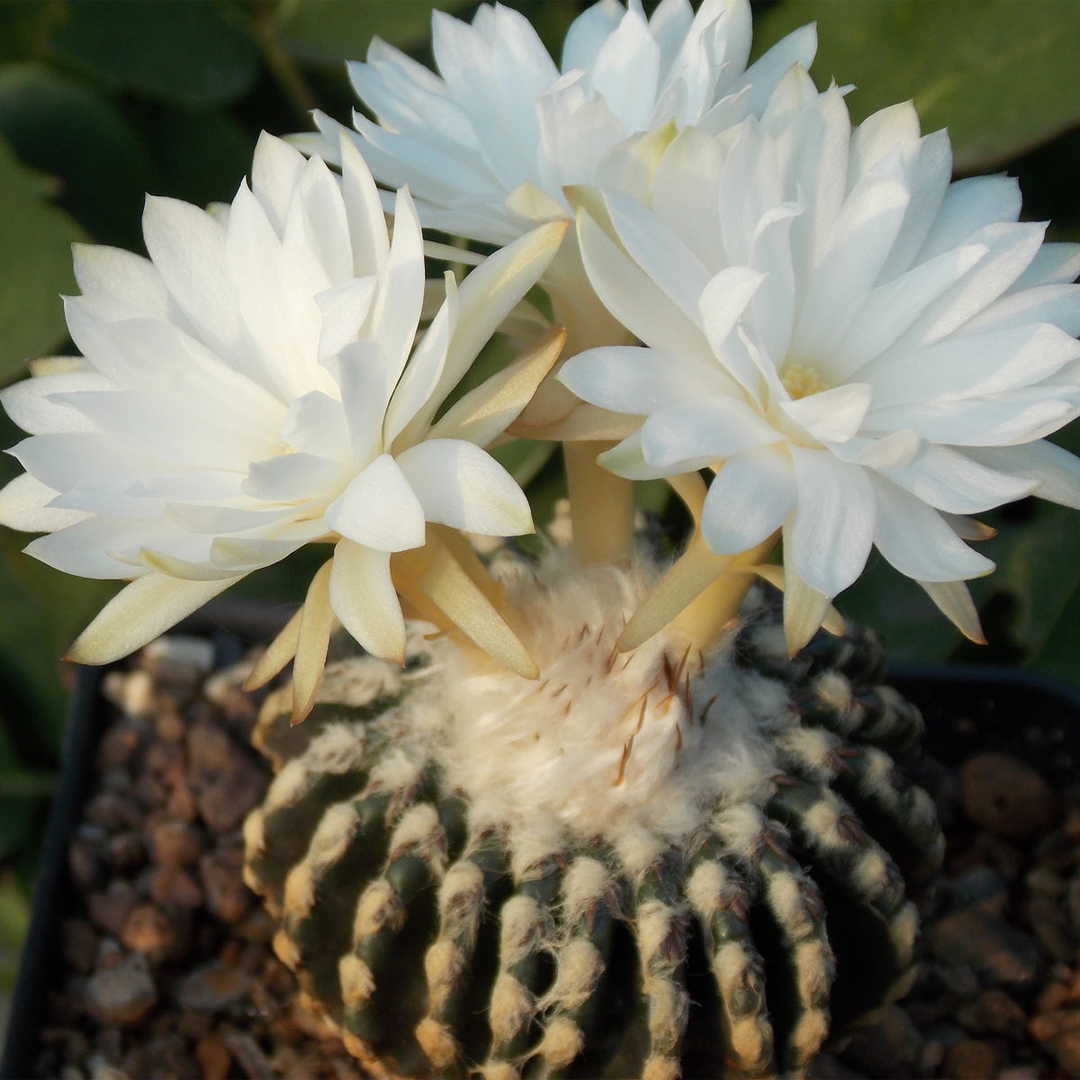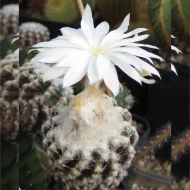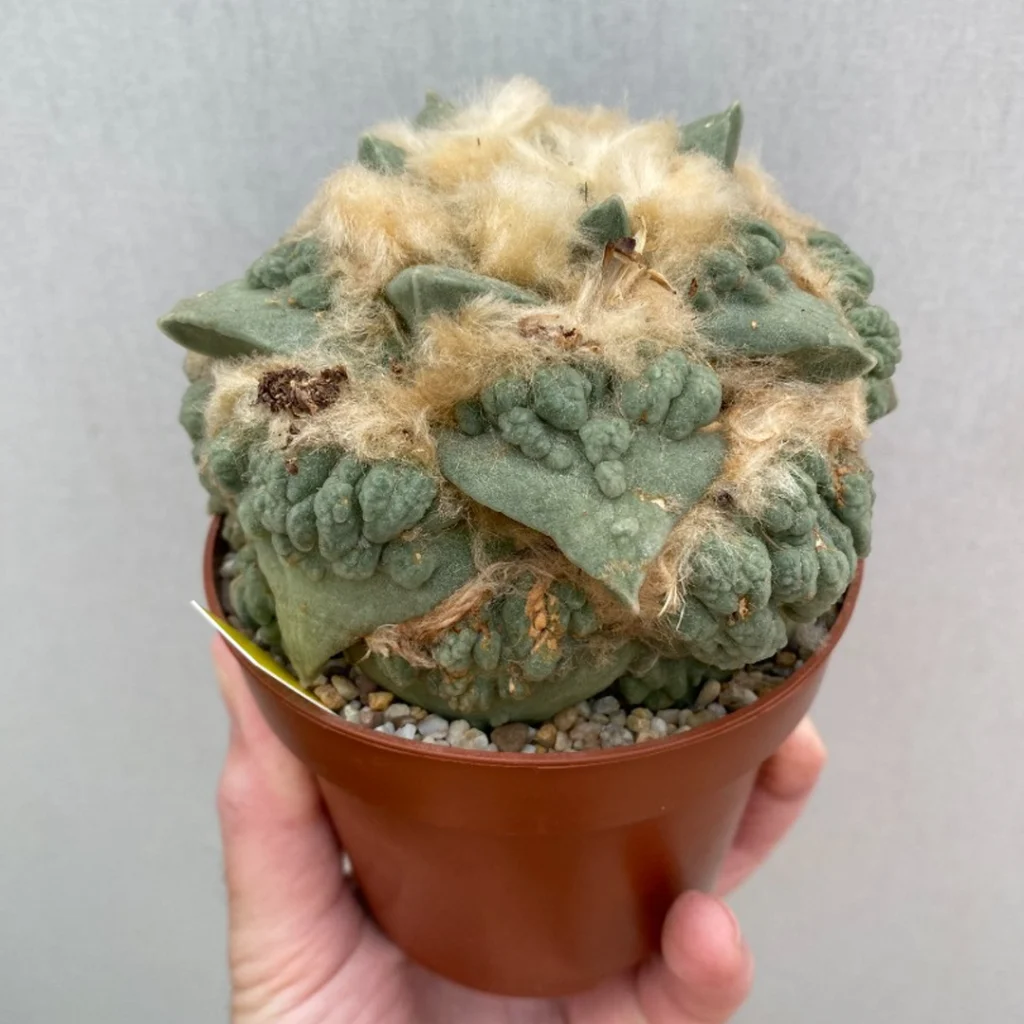Discocactus is a genus of unique and distinctive cacti, celebrated for their flattened, disc-like shape and stunning, colorful blooms. Native to regions of Brazil and other parts of South America, Discocactus species are typically found growing in rocky, dry habitats. These cacti have a characteristic, often globular, base that transitions into a flat, disc-shaped top, making them stand out among other cactus species.
The body of Discocactus is often green to grayish-green, and while it might lack prominent spines like other cacti, some species have a few scattered, fine spines. These cacti are slow-growing, making them an excellent choice for collectors who appreciate a distinctive and low-maintenance addition to their collection.
Discocactus blooms are a highlight, with large, funnel-shaped flowers that emerge from the top of the plant. These flowers range in color from white to pink, yellow, or purple, with some species exhibiting a sweet fragrance. The flowers tend to bloom at night, making them especially fascinating for night-time observers.
In cultivation, Discocactus is best suited for indoor environments or desert gardens where it can be protected from harsh frost. With proper care, it can thrive for many years, slowly growing into a striking specimen. Due to their rarity and unique appearance, Discocactus species are highly sought after by cactus enthusiasts.
How to Care
- Light: Provide bright, indirect light or partial sun. They can tolerate some shade but need plenty of light for healthy growth.
- Watering: Water sparingly, allowing the soil to dry out between waterings. Overwatering can lead to root rot.
- Soil: Use a well-draining cactus mix, or create your own mix with sand, perlite, or pumice to ensure proper drainage.
- Temperature: Keep in temperatures ranging from 20°C to 30°C (68°F to 86°F). Protect from frost, as they are sensitive to cold temperatures.
- Fertilizer: Feed with a diluted cactus fertilizer during the growing season (spring to summer) for optimal growth.
- Repotting: Repot every 2–3 years to ensure enough room for growth and avoid root-bound conditions.





















